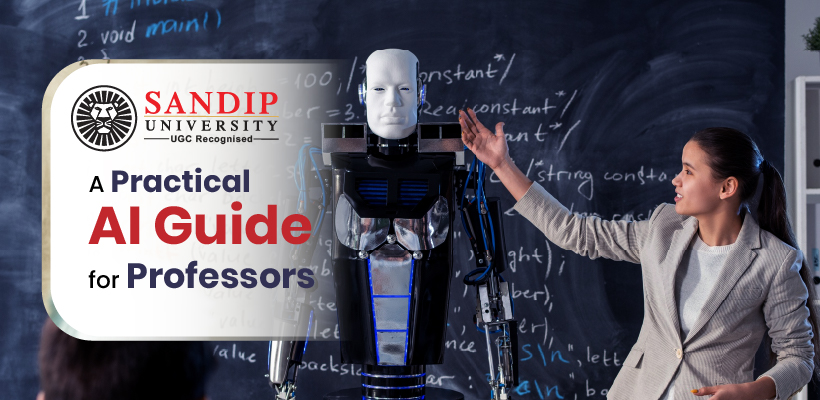While suggesting the adoption of Artificial Intelligence (AI) for professors, there should be a practical guide for the same. So, after doing some research and reading the articles from state level to international university blogs, here are some valuable insights. Some of the top private universities in Maharashtra are integrating AI into their classroom sessions for a futuristic learning experience. Here is an attempt to create a practical guide for professors on when and how to use AI in teaching in the state-level education system or in MSBTE.
Let us go step by step through the important points every professor should think about before using AI in teaching:
1. Check for Rules or Policy
The first step is to check if there is any policy for using AI in academics. If rules exist, they must be followed. If not, professors should discuss with colleagues or HoDs, or mentors before starting the use of AI. It is important to understand and follow set rules to avoid any professional and legal problems down the line when implementing AI in teaching.
2. Purpose
What is the purpose of using AI? Professors should ask themselves: will this AI method really help students to achieve course outcomes? For example, using AI tools to prepare practice questionnaires for Computer Engineering can save time and help students practice better. But it must connect to academic goals. There may be some branches of learning and teaching that may not be AI-friendly at the moment. Let AI integrate naturally into teaching and learning, instead of pursuing a forced and non-performative integration.
3. Accuracy
According to some experts, one major concern about AI is bias and accuracy. AI sometimes gives wrong or biased answers. So it should be verified by professors/team before sharing it with the students. At the end responsibility remains with the professor. Similarly, students may believe everything AI says. That’s why professors explain, refine and give proper context to AI-generated educational stuff. It is important to impress upon students that AI has its limitations and must not be relied upon heavily or blindly.
4. Easy Access
We know that some AI tools are paid, while others have free versions. By considering student affordability professors must design assignments or other material in ways that create equality amongst students, because not all students can afford premium access. Along with this, security is important. Tools should support multilingual features or screen readers. If a tool asks students to share personal data, professors should be careful and avoid it. Remember, if a tool or app is free, oftentimes you pay the price by sharing critical personal information that may be used in unsavoury activities.
5. Critical Thinking approach
This is one of the most careful tasks while using AI for students. Professors should make sure that AI is just drafting the task/assignment/material, and ask students to improve, analyse or solve it. In this way critical thinking will be encouraged. Also guide students to use AI material responsibly and ethically. It is important that students learn to use and develop their own intelligence rather than use AI as a tool to breeze through their academic journey.
6. Human Connection
AI will never replace human connection. Mentorship, discussions, and emotional support are still the heart of education. AI can help by saving time, but that saved time should be used for more personal interactions with students. For transparency, students should know that professors guide them with the help of AI, so that it will build trust and confidence in students. AI is simply a tool not a necessity in academia.
Conclusion
It is important to use AI thoughtfully, balancing innovation with responsibility. There has to be a balance between nurturing a student’s innate curiosity through human interaction, and limiting AI to the role of an assistive tool. If we follow such structured ways of teaching, we can give our students the best strong human guidance with modern technology. When used correctly, AI can really amplify the learning experience to benefit both students and teachers in the long run.

